Propulsion: Where Do We Go From Here?
Exploring the future of general aviation propulsion in three parts
Power Play
Our editors explore the future of general aviation powerplants
By Thomas B. Haines
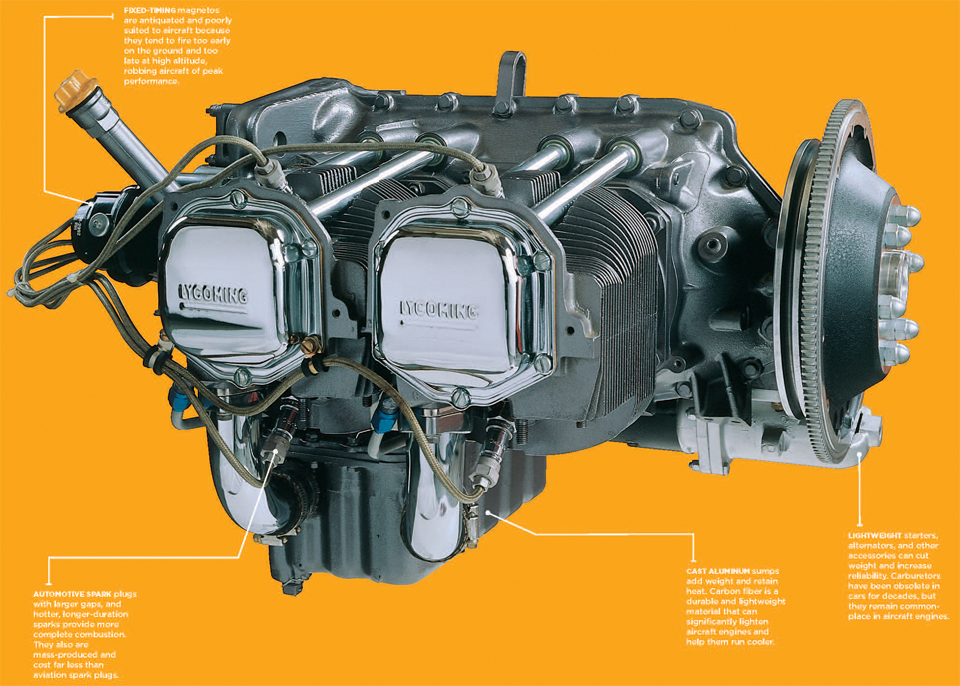
While general aviation faces numerous challenges, arguably none is bigger than the future of our powerplants. Today, most of us fly behind, next to, or in front of engines designed 70 or more years ago. While dependable, they are not terribly fuel efficient, many require a leaded fuel in order to achieve the necessary octane levels, and they are expensive to maintain. Driven by decreasing availability, increasing prices, and environmental concerns, leaded avgas will be phased out over the next 10 or more years—but, thanks to strong advocacy by AOPA, GAMA, and other organizations, the change will occur only when we have a viable alternative in place.
Meanwhile, diesel engines—long dreamed of as a good solution for GA—are finally gaining a foothold. The ability of such engines to burn Jet A fuel makes them much more viable in parts of the world where avgas—leaded or not—is either not available or astronomically priced.
A third type of propulsion—electric motors—has been much discussed in recent years, but progress has been slow. Given today’s battery technology, few believe that electric propulsion is a viable candidate in the foreseeable future for cross-country travel, but for training and local flights in light airplanes, it may be an option.
These unfolding trends around propulsion are so important that we turned a team of our editors loose on the subject. In this issue, Dave Hirschman uncovers some developing technologies that hold surprising promise to modernize today’s designs. Next month, Alton Marsh explores the possibilities around diesel powerplants. In September, look for a report from Tom Horne on efforts to leverage electricity to propel GA into the future.
Join the conversation through our Reporting Points blog and our Facebook page where, in both cases, you can post your comments on the subjects.
Email [email protected].
Air-Cooled Engines for the Twenty-First Century
The Determinator tests new technologies
By Dave Hirschman
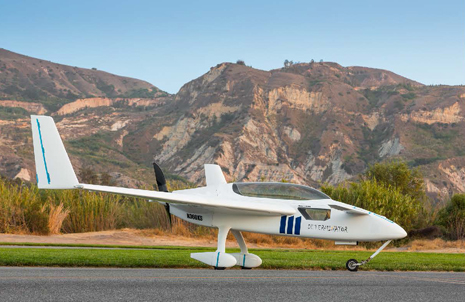
The four-cylinder engine starts instantly, runs smoothly all the way up to a cruise altitude of 16,500 feet, and delivers eye-watering efficiency of 30 miles per gallon at a true airspeed of 250 miles per hour.
Traditional air-cooled piston aircraft engines have long been maligned as dinosaurs. But when modified with digital add-ons such as electronic ignition and computerized fuel injection, this normally aspirated Lycoming IO-360 (attached to a sleek, Rutan-designed Long-EZ) becomes a model of efficiency.
“I want to find out how far I can push the efficiency of a traditional air-cooled piston aircraft engine,” said Klaus Savier, founder of Light Speed Engineering, a California firm that pioneered the use of electronic ignition and other automotive derivatives in Experimental aircraft. “This airplane brings together some of the most important lessons I’ve learned about technology and efficiency in my many years of aviation involvement.”
Savier’s Long-EZ (nicknamed the Determinator) builds on the record-setting foundation of a VariEze he built in the early 1980s and flew for more than 25 years and 4,000 flight hours (and which still resides in his hangar at California’s Santa Paula Airport). The Long-EZ engine is a parallel-valve IO-360 with high-compression pistons, dual electronic ignition, automotive spark plugs, electronic fuel injection, and a fixed-pitch propeller of Savier’s own design that turns about 2,600 rpm in cruise.
A flight from California to Florida required one fuel stop—as did Savier’s return into the prevailing wind. (The Long-EZ holds up to 47 gallons of avgas.)
“Air-cooled aircraft engines can be surprisingly efficient once we free them from magnetos and other ancient technology,” he said. “It’s appalling that after three decades of automotive use, electronic ignition hasn’t become standard equipment in aircraft engines. Electronic ignition provides an immediate 10-percent reduction in fuel consumption with a single-digit increase in power.”
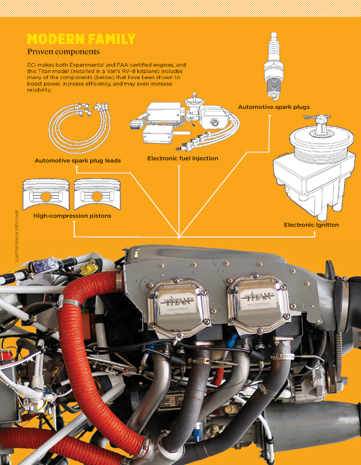 Magnetos have fixed timing and fire at the same point in the combustion cycle whether an airplane is at sea level or cruising at high altitude. Electronic ignition systems have variable timing, so they both start easier and run more efficiently at altitude. Unlike magnetos, electronic ignition systems have always required external electrical power to keep running. (ElectroAir got its first STC for its electronic ignition and single-magneto combination last year; E-Mag has applied for FAA certification of its electronic ignition systems with self-generating internal alternators; Lycoming uses a Champion-designed electronic ignition system on some of its non-certified engines; and GAMI is developing its “PRISM” electronic engine controls—see page 64.)
Magnetos have fixed timing and fire at the same point in the combustion cycle whether an airplane is at sea level or cruising at high altitude. Electronic ignition systems have variable timing, so they both start easier and run more efficiently at altitude. Unlike magnetos, electronic ignition systems have always required external electrical power to keep running. (ElectroAir got its first STC for its electronic ignition and single-magneto combination last year; E-Mag has applied for FAA certification of its electronic ignition systems with self-generating internal alternators; Lycoming uses a Champion-designed electronic ignition system on some of its non-certified engines; and GAMI is developing its “PRISM” electronic engine controls—see page 64.)
Most piston aircraft engines use about 0.6 pounds of fuel per horsepower per hour. That figure drops to about 0.54 pounds per horsepower per hour (according to the Lycoming manual) for an IO-360 properly leaned at peak horsepower, and 0.43 at 60 percent power. Savier’s highly modified IO-360 burns about 0.36 pounds of fuel per hour, a 40-percent efficiency gain over traditional aircraft engines, and a 16-percent improvement over a fuel-injected model with high-compression pistons.
“In the last 35 years, we’ve seen automobile engines double their horsepower output while their reliability has more than doubled,” he said. “But aviation engines haven’t seen anything close to the same sorts of improvements.”
(And lest you think Savier endorses automobile engines for aircraft use, he emphatically doesn’t.)
Engine Components International (ECi) manufactures and sells both FAA-certified and Experimental aircraft engines—and the modifications the company makes to its Experimental offerings give a hint at the improvements that are currently available.
ECi founder Jimmy Tubbs said the combination of dual electronic ignition (E-Mags), high-compression pistons, automotive spark plugs, and metered fuel injection improves power and efficiency about 20 percent over standard aircraft engines with magnetos and carburetors. Pilots can use those capabilities to fly higher, faster, or reduce fuel consumption as they choose.
But Tubbs says that truly radical advances in aircraft engine efficiency won’t become available until the aviation industry decides whether avgas, an unleaded fuel, or kerosene-based jet fuel will power the fleet in the future (see “Future Fuels,” below).
“We’ve made some very meaningful improvements to our Experimental-category engines, but these are incremental improvements and not game changers,” Tubbs said. “Incremental improvements are really the best we can hope for until the uncertainty over future fuels is resolved.”
Doubt about the cost and availability of leaded avgas and the nature, cost, and availability of unleaded replacement fuels is inhibiting investment in new products, he said.
“Engine manufacturers won’t invest in new technologies until these important questions are answered,” he said. “The penalties for making the wrong choices are just too great.”
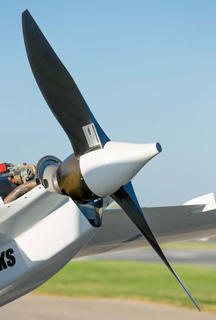
(Governments are spending large amounts in unmanned aerial systems, and Tubbs points to what he calls a very real possibility that the UAV industry may well develop advanced new heavy-fuel engines that could power GA aircraft in the future.)
Rotax has come to dominate the Light Sport aircraft category with its 912/914 line of partially liquid-cooled piston engines which operate best on auto fuel. Its newest model, the 912iS, combines dual electronic ignition and direct fuel injection with a digital engine control unit that constantly adjusts the fuel/air mixture in each cylinder.
Phil Lockwood, designer of the twin-engine AirCam and owner of a Rotax service center in Sebring, Florida, said the Rotax 912iS burns about 20 percent less fuel than a carbureted 912 at the same power settings.
“The new engine definitely runs smoother and leaner,” said Lockwood, who has been flying an AirCam with one 912 on the left side and a 912iS on the right. “The power output is the same, but the iS is lighter, it burns less fuel, and the electronic control unit keeps cylinder heads and exhaust gas temperatures right where they should be in every phase of flight.”
Both the 912 and the 912iS have 2,000-hour TBOs. Rotax has long considered building a higher-horsepower engine for the GA fleet, and even certified a V-6—but never put it into production.
Savier said electronic ignitions and, to a lesser extent, electronic fuel injection, have proven themselves with many hundreds of thousands of flight hours in a wide variety of piston aircraft. But meaningful improvement in flight efficiency requires a holistic approach that goes beyond engines and takes propellers and airframes into account.
It does little good, for example, to mate an efficient engine to a heavy, draggy airframe with a propeller developed more than a half-century ago. But a modern engine and a sleek, lightweight airframe like Savier’s Long-EZ (which makes extensive use of new materials) can yield exceptional results.
“When you increase engine efficiency by 20 percent, propeller efficiency by 10 percent, and reduce airframe drag by 40 percent, then you really start to get some spectacular improvements in performance,” he said.
“These are some of the areas I’m exploring with the Determinator,” he said. “I’m essentially getting the horsepower of a 6-cylinder engine from a 4-cylinder engine—and there’s still a great deal left for me to do. There’s still a long way to go.”
Email [email protected].
Future fuel
Unleaded alternatives
The “imminent” demise of leaded aviation fuel has been discussed, debated, and planned for more than 30 years; current efforts focus on ensuring that we will continue to have 100LL for the near future, while also implementing a program to transition the industry to an unleaded fuel with the least impact on the existing fleet. Our current leaded fuel eventually will go away, and when it does go, the goal is to have it replaced by other high-octane fuels capable of safely powering high-compression, turbocharged piston aircraft engines.
“Avgas will continue to be available for the near term, but the need to transition to an unleaded fuel is being driven by economic and environmental concerns,” said Rob Hackman, AOPA vice president for regulatory affairs and a member of the FAA and industry group sponsoring the establishment of a Piston Aviation Fuels Initiative (PAFI). PAFI is a five-year program for evaluating unleaded fuels and approving the most viable replacement for 100LL avgas. “At the end of that process, a high-octane fuel that can satisfy the needs of the GA fleet is anticipated,” Hackman said. “Even though it will not be an exact drop-in replacement for leaded avgas, this initiative will provide the data required to support FAA certification of the general aviation fleet to operate safely on the new fuel.” According to the PAFI road map, the FAA will gather data and identify potential replacement fuels by 2018. The agency will evaluate and develop data to be used for certification of the most promising fuels to be used for fleetwide approval. The replacement fuels may have slightly different weights, vapor pressures, or other characteristics, but extensive testing is meant to ensure the fuels are safe for wide use by the entire GA piston fleet. And the FAA will streamline its fuel evaluation and aircraft certification process so that each engine and aircraft model doesn’t have to undergo separate certification with the new fuel. Several promising new high-octane fuels—including those produced by Swift Enterprises and GAMI—have been proposed as alternatives. Also, while lawsuits by a few environmental groups and regulatory changes within the federal Environmental Protection Agency have attracted a great deal of attention in recent years, ultimately, it is the FAA that will set avgas standards, and it’s set out on a deliberate course to do that.
“We continue to work with the FAA and industry to implement PAFI to provide the path for the fleetwide evaluation, certification, and deployment of a new, unleaded aviation fuel,” Hackman said. “The Initiative is working to remove as many hurdles as possible to get there.”—DMH
Car-like fuel efficiency (At three times the speed)
Electronic ignition fires up an O-320
By Dave Hirschman
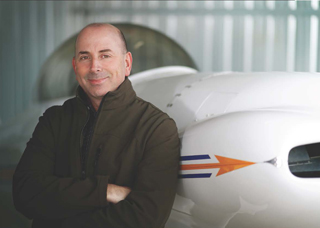 I’ve long desired two seemingly unattainable attributes from aircraft engines: Starting should be as easy as my car, and flying miles per gallon ought to be comparable, too. (My 10-year-old Chrysler Sebring averages 24 mpg.) Sure, it sounds crazy. But we can dream, can’t we?
I’ve long desired two seemingly unattainable attributes from aircraft engines: Starting should be as easy as my car, and flying miles per gallon ought to be comparable, too. (My 10-year-old Chrysler Sebring averages 24 mpg.) Sure, it sounds crazy. But we can dream, can’t we?
The Lycoming O-320 in my Van’s Aircraft RV–4 is carbureted, so starting is seldom an issue, but it occasionally gets cantankerous and requires excessive cranking. Airborne mileage is typically about 20 mpg—good, but not great for a 1,000-pound airplane.
The low-hanging fruit for improving engine efficiency is electronic ignition, and after many years and hundreds of thousands of safe flying hours in Experimental and Light Sport aircraft, meaningful progress is finally coming to the FAA-certified fleet. ElectroAir last year became the first to get its one-mag/one-electronic-ignition solution approved, and other firms including GAMI, Champion, and E-Mag are pursuing their own answers for a broad range of aircraft engines.
I decided to install dual E-Mags to get the full benefit of two electronic ignitions and avoid changing the existing aircraft electrical system (which has one battery and one alternator). Also, Engine Components International (ECi) has made dual E-Mags standard on new Experimental-category Titan engines, and they are getting very positive results in the field.
A few days after placing an order, a box arrived from E-Mag with an installation kit and instructions that said it would take between four and six hours to put them in. That turned out to be optimistic as each installation requires a small preinstallation scavenger hunt for the proper hoses and fittings unique to each aircraft. But under the guidance of A&P mechanic Carlo Cilliers, the magnetos, wiring harnesses, and spark plugs were soon gone from my Lycoming O-320 E2A, and two shiny E-Mags and replacement automotive spark plugs were in.
From a pilot’s perspective, the performance improvements with electronic ignition were apparent from the moment I first turned the key. The engine started instantly and idled smoothly. At 1,600 rpm, moving the key switch to isolate the left and right ignitions showed a tiny 20 rpm drop. And when I switched off the electrical master, the engine continued running normally. (Each E-Mag ignition has an internal alternator that supplies electricity continuously if the ship’s power is ever lost.)
In flight, the first noticeable difference was how smoothly the engine ran. It’s impossible to quantify, but undeniable.
In a cruise climb at 100 KIAS in the RV–4, fuel flow (12.5 gph) and engine rpm are unchanged, but the rate of climb increases about 10 percent.
Level at 7,000 feet, full power results in almost identical indicated airspeeds (154 and 156 KIAS respectively at 11 gph and 2,450 rpm), but the EGT spread between the hottest and coolest cylinder is far narrower with electronic ignition (100 degrees F instead of 300).
The efficiency improvement becomes dramatic when leaned for normal cruise. At 75 percent power (23.5 inches manifold pressure, 2,400 rpm, and 145 KIAS), fuel flow settles at 8 gph (down from 9.0 gph with mags). At a more economical 65 percent power (22 inches mp, 2,200 rpm, and 135 KIAS) fuel flow drops all the way to a miserly 6.0 gph.
When you do the math, the high cruise setting (75 percent power) works out to about 23.5 statute mpg—and low cruise (65 percent) yields an astonishing 29.5 mpg. That’s better than my car does on the highway, and the airplane goes three times as fast, in a straight line, with no traffic lights or stop signs, and is just way more fun. Much greater efficiency is still available by flying higher and incorporating newer technology such as matched fuel injection, electronic fuel injection, or even direct injection.
Making the change to electronic ignition isn’t trivial from a labor or cost standpoint. Two E-Mags plus harnesses, adapters, and new spark plugs cost about $2,750. But periodic magneto service and timing are a thing of the past, and replacement spark plugs cost $3 each instead of $35. (By comparison, two new Slick magnetos, new harnesses, and new spark plugs sell for $2,800.)
But after making the change, my biggest questions are: Why didn’t the aviation industry adopt this technology a long time ago?
And what’s holding us back now?



